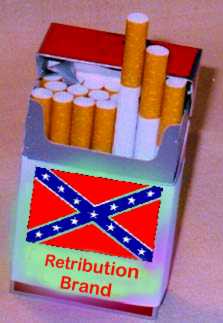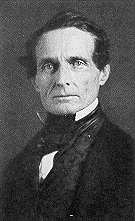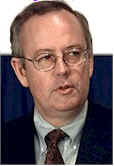
of Coumarin in Tobacco
|
Laurence Johnson, M.D., A Manual of the Medical Botany of North America (NY: William Wood & Co, 1884), pp 170-171
Prof. L. H. Pammel, Ph.D., A Manual of Poisonous Plants (Cedar Rapids, Iowa: The Torch Press, 1911), p 138 Simons, Die Cumarin (Stuttgart: Ferdinand Enke Pub, 1916), p 69 Thomas S. Blair, M.D., "Coumarin and Tobacco" [Ltr], 92 J Am Med Ass'n (#17) 1471 (27 April 1929) Jerome E. Brooks, The Mighty Leaf (Boston: Little, Brown and Co., 1952), pp 298-299 Arnold Krochmal, Trilisa odoratissima, 23 Econ Bot 185-186 (1969) F. A. Haskins, H. J. Gorz, and R. C. Leffel, "Form and Level of Coumarin in Deer's Tongue Trilisa odoratissima," 26 Econ Bot (#1) 44-48 (1972) Elizabeth M. Whelan, Sc.D., M.P.H., A Smoking Gun—How the Tobacco Industry Gets Away With Murder (Philadelphia: George F. Stickley, People's Health Library, 1984), p 203. James A. Duke, Handbook of Medicinal Herbs (Boca Raton: CRC Press, 1985), p 491 Robin J. Marles, César M. Compadre, and Norman R. Farnsworth, "Coumarin in Vanilla Extracts: Its Detection and Significance," 41 Econ Bot (#1) 41-47 (1986) |
|
Poisoning has a long record of being used against one's enemies. For example, in 1623, British negotiators of a treaty with Indians near the Potomac River, under Chief Chiskiack, offered a toast "symbolizing eternal friendship." The British poisoned the food. The Indians (chief, family, advisers, and two hundred in the retinue), then died immediately of poisoning!—J. Leitch Wright, Jr., The Only Land They Knew (New York: Free Press, 1981), p 78.
Poisoning by the Spanish conquistadores is reported to have killed tens of millions in the 1500's, via smallpox, "anthrax, brucellosis, leptospirosis, trichinosis, and tuberculosis."—Charles C. Mann, "1491," 289 Atlantic Monthly (#3) 41-53, at 46 (March 2002). America at Columbus' time had 150,000,000 natives, says Dr. Hippolyte A. Depierris, Physiologie Sociale (Paris: Dentu, 1876), p 25. Dr. Depierris adds that Indians, in response to the invasion of their land, began using tobacco as a war weapon against the invading Spaniards and colonists, including by the deceptive approach of claiming it was health panacea, while of course actually intending to kill the invaders, pp 96-99. |
| For background on the "Second Civil War," by "unreconstructed Southerners," see, e.g.,
Note that "Attitudes that provoked the Civil War and still cause much red state-blue state nastiness have never disappeared, whether the issue is race, religion, guns, states' rights, trade, central banks or immigration," a quote from the review by Prof. Geoffrey Wawro of the book by Simon Winchester, OBE, The Men Who United the States (Harper Collins Pub, 15 October 2013). |
| For more on "unreconstructed Southerners," aka creationists, see, e.g., hate, loathing, mayhem, crime storm, and mass violence. |

| (The mere fact that data is published in medical journals does not mean that laymen are aware. Unawareness is how laymen can be killed by a known toxic substance. The knowledge is limited to professionals in the subject matter, a small group of scholars. Lay unawareness is aided and abetted by the mass censorship of tobacco news ). |


The South had been accustomed to ruling America on all issues, e.g.,
When Abraham Lincoln won the Presidency in Nov 1860, and months BEFORE he could even take office (4 March 1861), the South had flown into a rage, and pursuant to its "rule or ruin" policy, sought to overthrow the U.S. government, and started this latest war of aggression.) |
| "The men of the North and South had fought 10,455 major and minor engagements and had suffered more than a million casualties. Aside from the dead—360,222 from all causes on the Union side and an estimated 258,000 on the Confederate side—there were the countless thousands who bore the marks of the War.
"According to the official records, at least 280,000 Union veterans returned home with wounds of varying severity; the Confederate wounded came to somewhat more than half that number. "But the records had nothing to say about the hidden casualties of the War: those who came home mentally crippled or so debilitated physically that their health would remain precarious for the rest of their days." Source: Richard W. Murphy, ed. The Civil War: The Nation Reunited: War's Aftermath (Alexandria, VA: Time-Life Books, 1987), p 25. The war was Living Hell, the title of a history of that War, written by Michael C. C. Adams. |
Note modern examples, such as by Jefferson Davis' successor, Trent Lott. Lott regularly remarks that things would be better had racists of the past had more success! This is a Southern method of carrying on the legacy, of passing on an attitude of evil. This skill of passing on the message for generations, is a skill "unreconstructed Southerners" have mastered for centuries. Of course, if their remarks come to Northern attention, they "apologize." And when years later, caught again, apologize again . . . but keep on passing on the legacy!! Very well calculated, be assured. Note the example of Robert Bork and accessories. |
"As postwar president of Washington College in Lexington, Virginia, [America's enemy who helped cause the above-cited 1,038,222+ casualties] Robert E. Lee [1807-1870] created the nation's first [college] departments in . . . two curricula fields . . . journalism and commerce," says Webb Garrison, Civil War Trivia and Fact Book (Nashville, Tenn., Rutledge Hill Press, 1992), Chapter 5, "First Events and Achievements," p 110. This sinister linkage, journalism and business, censoring, falsifying, and prostituting truth to the Old South tobacco/slavery agenda, continues to present. And casualties thereby aided and abetted continue en masse. The continuing censorship and falsification policy assures that the public does not know such facts about the continuing war as those presented herein.
"If one Confederate soldier kills 90 Yankees,
how many Yankees can 10 Confederate soldiers kill?"
Data on National Damage
| And such writers were reporting the pattern of smoking-linked national collapses dating from the Spanish conquistadores' conquest of Mexico. See examples:
Vengeance-seeking Confederates saw the pattern, and began targeting their still-hated foe, in a pattern continuing to present. April 1865 events had included (a) the fall of Richmond, (b) the Southern plan for guerrilla warfare whichn would include chemical warfare, and (c) the South's action to snatch victory from the jaws of defeat, via Lincoln's assassination and replacement with a Southerner, Andrew Johnson, who'd support the South in its violent revenge activities. |

| "[Trilisa] odoratissima deserves much more attention from the fact that it is largely used as an adulterant of smoking tobacco . . . There is abundant evidence to show that the leaves of this plant enter largely into the manufacture of many grades of smoking tobacco, especially those employed in our domestic cigarettes. And the author is convinced, from personal experience and observation, that the deleterious effects produced by smoking tobacco thus adulterated are much greater than those produced by the consumption of pure tobacco in even great excess.
"The inhalation of a few whiffs of the smoke from a cigarette made of this adulterated material, provided the inhalations are made in quick succession, produces a train of cerebral sensations of an intoxicating character as much different from any effect of tobacco alone as could be imagined; and prolonged use of such cigarettes invariably produces great derangement of the digestive organs, very little resembling the dyspepsia induced by excessive use of tobacco, together with cardiac symptoms of a distressing character. "And again, the habit of smoking coumarin in this form appears to be more inveterate, more exacting, than that of the use of tobacco alone, so that the unhappy victim--for this he should be called--is never comfortable except when indulging. Hence it happens that cigarette-smoking in this country, in its effects upon adolescents especially, is assuming the proportions of a great national evil, and is producing far more deleterious effects than in other countries where it is practised to a greater extent but with different material." Laurence Johnson, M.D., A Manual of the Medical Botany of North America (NY: William Wood & Co, 1884), pp 170-171. |


(Southern revenge song)
| "I'm a good old rebel,
Now that's just what I am, For this 'Fair Land of Freedom' I do not care a damn; I hates the Yankee nation
Three hundred thousand Yankees
They died of Southern fever,
—Bob Woodward and Scott Armstrong, The Brethren: Inside the Supreme Court (New York: Simon and Schuster, 1979), pp 147-8) |
"The Would-Be Jumper"
(Modern Southern Joke: June 2000)
|
A farmer in his pickup truck in Alabama was driving across a bridge when he noticed a man standing on the rail of the bridge ready to jump to his death in the river below. The man stopped his truck, ran up to the man and said, "Hey fellow, why are you doing this?"
The man replied, "Well, I have nothing to live for." The Alabama man replied, "Well, think of your wife and children!" The jumper replied, "I have no wife or children." The Alabama man then said, "Well, then think of your mother and father!" The man replied, "Mom and Dad passed on many years back."
The would-be jumper replied, "Who?" With that the Alabama man said, "Jump, you stupid Yankee, jump!" To such hate filled unreconstructed Confederates, Lee is still in Clouds of Glory, a supposedly impartial book by Michael Korda. |
| "The term 'narcotic' is broadly defined to encompass any substance, including . . . hallucinogens, which directly induces sleep, allays sensibility, or blunts the senses, and which, when taken in large quantities, produces narcotism or insensibility." See 25 Am Jur 2d, Drugs, Narcotics, and Poisons § 2." Annot., 92 ALR3d 47 (1979) |
A Smoking Gun—How the Tobacco Industry Gets Away With Murder (Philadelphia: George F. Stickley, People's Health Library, 1984), p 203.
“Over 37 million people (one of every six Americans alive today) will die from cigarette smoking years before they otherwise would,” says the U.S. Dept of Health, Education and Welfare's National Institute on Drug Abuse (NIDA) book, Research on Smoking Behavior, Research Monograph 17, Publication ADM 78-581, p v (Dec 1977).
Otherwise Objecting to Revealing Information
|
Castano v American Tobacco Co, 896 F Supp 590 (ED La, 27 July 1995) (censorship request denied)
Burton v R. J. Reynolds Tobacco Co, 916 F Supp 1102 (D Kans, 12 Feb 1996) (issue of manufacturer fraud, knowing but concealing tobacco's role in cancer and vascular disease) Burton v R. J. Reynolds Tobacco Co, 167 FRD 134 (D Kans, 1 May 1996) (later phase of the case, on a discovery issue, court would do in camera review to determine whether the crime-fraud exception applies to documents allegedly covered by attorney-client privilege) Burton v R. J. Reynolds Tobacco Co, 175 FRD 321 (D Kans, 14 Aug 1997) (later phase of the case, a number of tobacco company documents were found not protected by attorney-client privilege) Philip Morris, Inc. v Harshberger, Mass Atty Gen, Case 97-8022 (lawsuit against state disclosure law) Philip Morris, Inc. v Harshberger, Mass Atty Gen, Case 98-1199 (later phase of the lawsuit) |
| "growers of burley tobacco [who] complain [of words] which announce, directly, or by innuendo, that the smoking of cigarettes will kill those persons who smoke them . . . . cigarette advertising . . . has been directed to young persons . . . medical or scientific body undertaking a systematic review of the evidence has reached conclusions opposed to those of the Surgeon General's. . . ."
"The doctrine of clean hands requires this Court . . . to avert further injury to the public, by the continued retardation and erosion of public awareness of the hazards of smoking . . . the mere fact that information is available, or even that it is actually heard or read, does not mean that it is effectively understood. A man who hears a hundred 'yeses' for each 'no,' when the actual odds lie heavily the other way, cannot be realistically deemed adequately informed." "Any time the uncleanness of . . . hands . . . comes to the attention of the Court . . . the Court is required to act sua sponte . . . on account of the public interest . . . for the advancement of right and natural justice." |
| Ed. Note: When rebels in Scotland sought to overthrow and replace British monarchy dynasty in 1745, the English under King George II (1727-1760) followed this principle immediately after the last battle, at Culloden, in
1746: "the commander [Gen. Cumberland] of the government forces . . . ordered his soldiers to spare no one, not even the wounded lying in the fields and woods. . . . Hundreds of the fallen [wounded] were shot or stabbed where they lay. Some were even buried alive. Many of the captured were shot on the spot. . . .
"After the butchering of the [defeated] army . . . the [violence] continued. [The government commander] decided that a repeat of this rebellion must never occur. He was going to 'pacify' [them] once and for all. . . . the government army scattered thoughout the [rebellion area] bringing destruction in their wake. Cattle and sheep were slaughtered, crops ravaged. Cottages, farms, and houses were burned in every district . . . "The lands of the fallen [rebel leaders] were forfeited and turned over to [government managers]. Laws were quickly passed that stripped the [defeated leaders] of all authority. [Their] councils were declared illegal, as was the wearing of [their clothing style], the playing of [their music style], even the mere speaking of [their language]. "The 'harrying of the glens,' as the pacification came to be known, was thorough, cruel, and brutal. [General] Cumberland was singularly successful in ensuring that the [potential rebels] would never rise again. . . . "The [former] culture became just a memory . . . . But what was lost . . . did not outweigh what was gained—the elimination of the fear and wariness caused by the [rebels] and their violent and martial culture, their arbitrary and antiquated laws, and the genuine risk of real conflict. . . . "So, although they [the surviving people] did not approve of the way the [rebels] were quelled by the English government and army, they were pleased with the result—the end of the specter of violence. An energy and determination fell over the [surviving Scottish people] that laid the groundwork for an extraordinary intellectual flourishing a generation later.” Reference Jack Repcheck, M.A., The Man Who Found Time: James Hutton and the Discovery of the Earth's Antiquity (Perseus Pub, 2003), pp 81-83. Following the battle, the composer George Frederick Handel (1685-1759) wrote the oratorio Judas Maccabaeus to honor the Duke of Cumberland, with the aria “See how the conquering hero comes”. See also "Hail the Conquering Hero" and "Thine Be the Glory" (music). The effective British approach was in marked contrast to the U.S. approach under Presidents Lincoln, Johnson, Grant, etc., in dealing with the South. Like Chamberlain wanting peace at any price so appeasing Hitler, Lincoln merely issued an "Emancipation Proclamation" and "pardons," and intended to let the rebels back into the U.S. government. This promptly happened. The rebel leaders still holding their rebel notions, were quickly re-voted into state governments and Congress. They immediately enabled widespread lynchings of blacks and Reconstruction workers. This type naive and weak U.S. Reconstruction policy of appeasement left the rebels in full and bloody control. This appeasement policy repeated the error of Julius Caesar. "Caesar had not proscribed his enemies, instead pardoning almost all." Result: He too was killed by those he had sought to appease, and more violence followed in the Roman nation. See also Michael Parenti, Ph.D., The Assassination of Julius Caesar: A People’s History of Ancient Rome (New York: The New Press, 2003). Lincoln's naive appeasement/weakness policy repeating Caesar's error, enabled lynchings, segregation, atrocities en masse, and killings and poisoning as herein described. Tobacco planters had been in charge before their bloody rebellion 1861-1865, and instead of being wiped out as the English had done with their rebels, Southern rebel leadership was left not only alive, but also in charge, including holding office in both the states' and federal governments. Instead of making progress like Scotland, the South remained antiquated in attitude, and not only that but genocidal in terms of desire to kill. We still have the grey vs the blue, now called the 'red states' vs the 'blue states.' Worse, Hollywood puts down the North, romanticizes the South. See Luther Spoehr: Book Review, Review of Gary W. Gallagher's Causes Won, Lost, & Forgotten: How Hollywood and Popular Art Shape What We Know About the Civil War (University of North Carolina Press, 2008). |

- ban smoking in state buildings,
- prohibit tobacco sales on state property, and
- to end production of cigarettes by state prisons.
| Exec Order 1992-3 | Law Support Letter # 1 | Anti-Cigarette Smuggling Finding | Law Support Letter # 2 | Governor's Overview |
| Abortion | AIDS | Alcoholism | Alzheimr's | Birth Defects |
| Criminals | Divorce | Drugs | Hearing Loss | Heart Disease |
| Lung Cancer | Mental Disorder | Seat Belts | SIDS | Suicide |
| President George W. Bush | U.S. Senator _______ | U.S. Representative __ | Governor ___ | State Senator __ | State Representative __ |
| 1600 Pennsylvania Avenue | Senate Office Building | House Office Building | State Capitol | State Capitol | State Capitol |
| Washington DC 20500 | Washington DC 20510 | Washington DC 20515 | City State Zip | City State Zip | City State Zip |
HISTORY OF THE TOBACCO HAZARD
This site is sponsored as a public service by
Copyright © 1998, 1999 TCPG
The Crime Prevention Group